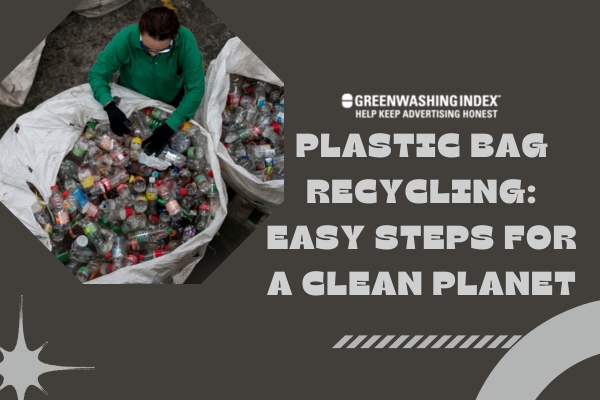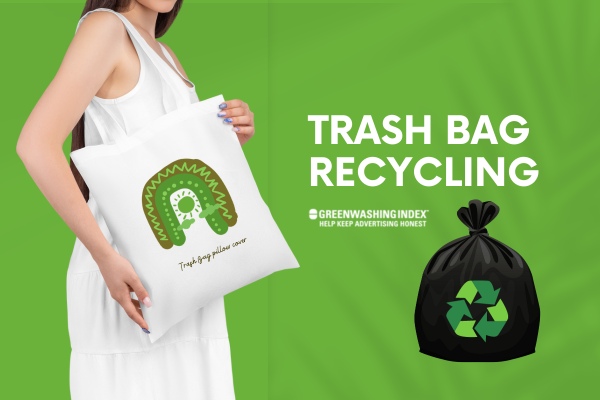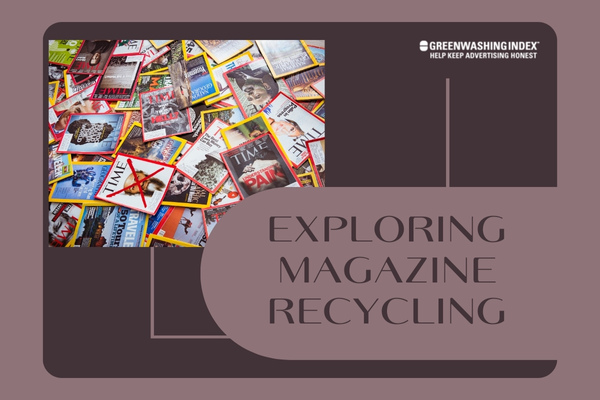When it comes to taking care of our precious Earth, every little action counts and this includes how we manage the common plastic bag. Have you ever wondered about plastic bag recycling and how it can make a difference?
The answer might surprise you! It’s not just about tossing them into a bin – there’s a whole world behind those crinkly plastic wonders waiting to be explored, and I’m here to guide you through it!
Handling plastic bags the right way can be confusing. Can they really be recycled? The straightforward response is yes, with the right know-how.
As simple as using your regular recycling bin may seem, most curbside programs won’t accept them. Instead, these bags need special attention. Drop-off locations at grocery stores or recycling centers are typically set up just for them. Once collected, they’re whisked away to facilities where they’re given new life as different products.
What You’ll Discover Here:
- Clear-cut ways to recycle your plastic bags.
- Simple steps to prep bags for recycling.
- Where to find local recycling drop-offs.
- Tips on reusing plastic bags creatively.
Understanding Plastic Bag Recycling
When we talk about plastic bag recycling, it’s important to know what exactly this means. So, what is plastic bag recycling? It’s a way of turning used plastic bags into useful things instead of throwing them away.
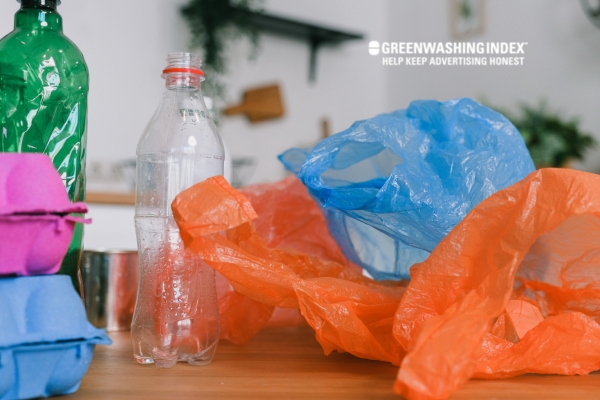
When we reuse these bags or make new things from them, that is what we call “plastic bag recycling.” It might sound simple, but it’s a big deal because it helps our planet in many ways.
You’ve seen plastic bags, right? They’re those thin bags you get at grocery stores or shops. But once you’re done with them, where do they go? Usually, in the trash – and that’s the problem. They can actually be recycled – which means they’re turned back into something good again instead of hurting the earth.
Plastic bag recycling takes these old bags and changes them so we can make new products from them. This could be decking for your garden, benches for parks, or even more plastic bags! This process keeps the bags out of landfills and oceans, where they can do a lot of harm.
Why is this important? Because there are billions of plastic bags being used every year! That’s why I think everyone should know about how to recycle these little guys.
It’s also a step towards sustainable living – which just means living in a way that doesn’t waste resources and looks after our world. Eco-friendly practices like recycling are ways to protect nature and reduce pollution.
The Environmental Impact
Let me share something really serious here: if we don’t recycle plastic bags properly, they hurt nature – badly. Here’s how: when left out there in the open land or waterways, these lightweight pesky pieces float around easily because they’re so light.
Animals sometimes mistake them for food and eat them. Not good at all! This can make animals sick or even cause their deaths. Plus, as these plastics break down over hundreds of years—yes, years—they release harmful chemicals into soil and water channels, too!
To give you an idea of how much impact this has, imagine millions upon millions over many years… You get it; it’s huge!
Remember when I said eco-friendly practices? Not letting your old shopping bag become part of this problem is one good step towards earth-kind habits.
Now that you know why this process matters so deeply for our environment, let’s all try our best to keep up our eco-friendly habits, such as proper plastic bag recycling!
Also Read: Mattress Disposal: Easy Steps for Eco-Friendly Solutions
Steps to Effective Plastic Bag Recycling
Recycling plastic bags is a key part of living sustainably and taking care of our Earth. I want to make plastic bag recycling easy for everyone, so let’s go through the steps together.
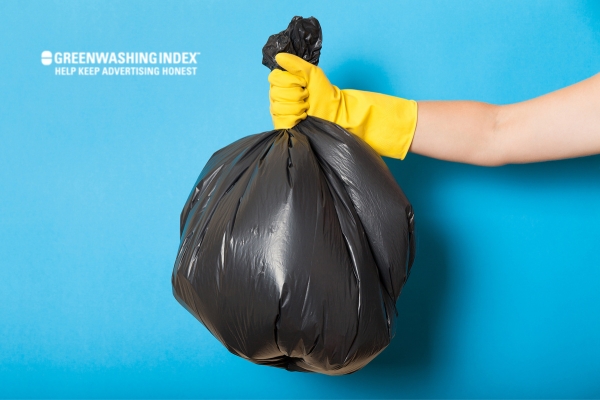
Proper Sorting and Cleaning
Before diving into how to recycle plastic bags, it’s important that they are clean and sorted correctly. This might sound hard, but trust me, with these basic steps, anyone can do it.
- Empty Out the Bags: Make sure there is nothing inside the bags. Shake them out to remove receipts, stickers, or any bits of food.
- Look for Non-Plastic Items: If your bag has a zipper or buttons that are not made of plastic, take those off. We’re focusing on plastic only.
- Check for Cleanliness: Any dirt or leftover food can spoil the recycling process. Wipe down the bags gently with a damp cloth if you see any spots or stains.
- Dry Them Well: After wiping them clean, let them air dry completely before you move on to the next step.
- Separate by Type: Not all plastic bags are the same! Some are stretchy; others are crinkly when you touch them. Put all the stretchy ones in one pile and all the crinkly ones in another pile.
- Roll Them Up Together: Take each sorted pile and roll up the bags into a tight circle shape – kind of like when you roll up socks together after doing laundry.
By following these simple sorting and cleaning rules, we make sure our old plastic bags are ready for a new life!
Finding Local Recycling Options
Now that we’ve got our cleaned and sorted piles of rolled-up plastic bags, we need to find where they should go next! Fortunately, finding a “plastic bag recycling” center near us isn’t too tough if we know what methods to use:
- Internet Search: Type “plastic bag recycling near me” on your favorite search engine (like Google). This should show some local options.
- Local Government Resources: The town hall or local government’s website might have lists or maps showing where you can recycle plastics.
- Stores that Care about Eco-Friendly Practices: Many grocery stores have drop-off spots for recyclable bags right at their entrance!
- Ask Around in Community Boards (both online and offline): Sometimes, just asking neighbors can lead you to great local spots for recycling.
- App Help: There are apps designed specifically to help find nearby recycling centers tailored precisely for items like our good old plastic bags!
Remember: Always call ahead if possible to confirm that your chosen spot definitely takes used plastics – this saves time and effort!
By going step-by-step through sorting/cleaning your used plastics correctly, then finding where they get recycled locally… Congrats! You’re owning this whole “sustainable living” thing!
Let’s keep those efforts rolling – Mother Nature thanks us all every time we do right by her with eco-friendly practices like effective plastic bag recycling!
Also Read: Styrofoam Disposal: Easy Ways to Reduce Environmental Impact
Common Misconceptions About Plastic Bag Recycling
When it comes to plastic bag recycling, there’s a lot of confusion out there. I want to set the record straight and talk about what’s true and what’s not. It’s important because knowing the facts helps us do better when we recycle and live more eco-friendly lives.
Clearing Up Confusion
First, a big myth is that you can recycle all plastic bags. But that is not quite right. You see, not every plastic bag can go into your regular recycling bin at home. The thin grocery bags? Those need special care. They can easily mess up the machines at recycling centers if they are not handled properly.
Second, some people might tell you that thicker plastic bags, maybe ones from a clothing store, are okay to toss into your home recycling bin. This could be true in some places, but it’s often wrong, too! Every area has its own rules for recycling, so it’s best to check with local services.
So let me list out some clear points:
- All Plastic Bags Are Not the Same: Some bags, like sandwich bags, are different from grocery bags or trash liners.
- Check Your Local Rules: Always look up what your community says about plastic bag recycling.
- Recycling Drop-off Points: Stores sometimes have bins for those grocery bags—use them instead of your home bin.
- Prepare Your Bags: If they accept them, make sure the bags are clean and dry.
- Some Bags Just Can’t Be Recycled: Sadly, if a bag has paint or glitter on it, it’s likely heading for the trash unless special facilities exist.
Remember these tips next time you’re handling plastic bags at home! Knowing this can help us keep up with eco-friendly practices and support sustainable living in small yet significant ways.
Recycling methods differ everywhere – when we get them right by staying informed – we make sure our efforts aren’t wasted (pun intended).
Also Read: Computer Recycling: Green Guide to Old Tech Disposal
Types of Recyclable Plastic Bags
When we talk about plastic bag recycling, we need to know that not all plastic bags are made the same way. Some can be recycled; others cannot. Let me tell you about the types that you usually can recycle.
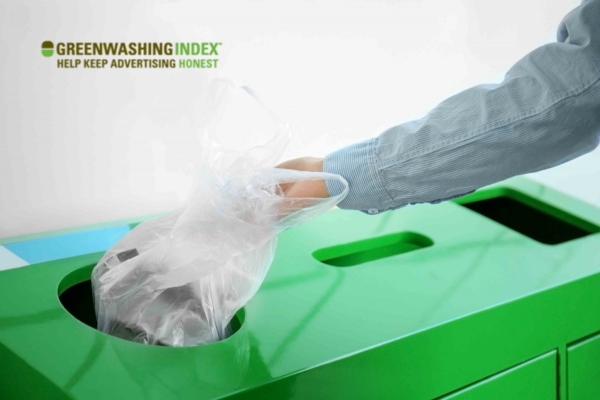
First off, there are two main types of recyclable plastic bags based on the material they are made from:
- High-Density Polyethylene (HDPE): These are often labeled with a number 2 inside the recycle symbol. They feel more crinkly and sturdy.
- Low-Density Polyethylene (LDPE): These have a number 4 inside the recycle symbol. They are softer and more flexible.
Identifying Recyclable Materials
Now, let’s go into detail about how to spot these materials and what those numbers and symbols mean.
Most recyclable plastic bags have a small triangle with arrows – that’s called the “recycle symbol.” Inside this triangle, there’s a number. That number is super important because it tells you what type of plastic you’re holding in your hand.
Here is what to look for:
- The Recycle Symbol: It’s three chasing arrows shaping a triangle.
- The Number Inside: If it’s 2, that means it’s HDPE – think stronger bags like the ones from department stores or grocery markets.
- The Number Inside: If it’s 4, it indicates LDPE – these are softer, like bread bags or produce bags from grocery stores.
Once you’ve located this symbol and identified the number, congrats! You now know if your bag is one of those meant for plastic bag recycling.
Keep in mind:
- Not every place accepts all recyclable types; some might only take HDPE, while others might take both HDPE and LDPE.
- If there’s no symbol or number, then sadly, that plastic bag might not belong in the recycling bin, but don’t lose hope! Look up special recycling methods for such cases – I’ll touch on them soon enough.
Understanding these symbols makes us smarter in our eco-friendly practices as we pursue sustainable living. It’s these little steps toward proper recycling methods that make a big difference for our planet!
Remember, when in doubt, check for numbers 2 or 4 before tossing into recycling – this simple step keeps plastic bags within the realm of being helpful instead of harmful to our environment.
Also Read: Greenhouse Gardening: Your Ultimate Guide to Aquaponics
Locations for Dropping off Your Bags
Recycling plastic bags is important for keeping our planet clean and healthy. You might be wondering, “Where can I recycle my plastic bags?” Let me tell you about some places where you can take them.
Most of us go to the grocery store at least once a week. You may have noticed special bins near the entrance or exit of these stores. These bins are often marked for plastic bag recycling. They’re there so you can drop off your plastic bags instead of throwing them away.
Besides grocery stores, some big retail shops also have these recycling containers just inside their doors. Before you go shopping, simply gather your used plastic bags from home and take them with you to drop them off.
Another place to look for recycling methods for your plastic bags is at local community recycling centers or drop-off points. Some communities provide special spots where residents can bring various recyclable materials, including plastic bags.
If you’re not sure about locations in your area, here’s what you can do:
- Check online by searching recycling locations for plastic bags near me.
- Ask someone who works at the grocery store.
- Look out for community recycling days in your area where they accept plastics.
Remember, an essential part of eco-friendly practices is making sure that the plastic bags are clean and dry before dropping them off. This helps in easier and more effective plastic bag recycling.
By finding these places and regularly taking our old bags there, we play an important role in sustainable living. It helps reduce waste and keeps our environment cleaner.
Also Read: Composting Bread: Unveiling the Truth About Bread Waste
Beyond Recycling – Reusing Plastic Bags Creatively
I love finding new ways to use things, and plastic bags offer a world of possibilities! Before I jump into “plastic bag recycling,” I like to think about how I can give them a second life. Let me share some innovative reuses for plastic bags that might just inspire you.
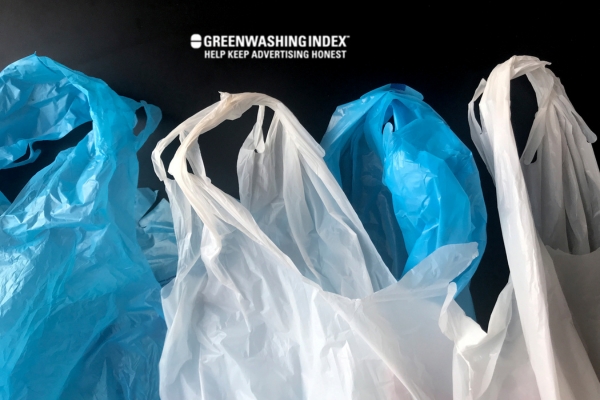
Innovate Reuses at Home
Plastic bags are so much more than just something to carry stuff in. With a bit of imagination, they can become part of my craft projects or handy DIY solutions around my home.
- Protective Wrapping: When I send packages or need to store fragile items, bunching up plastic bags makes for perfect cushioning material. It’s a simple way to keep things safe without spending money on bubble wrap.
- Waterproofing: If it’s raining and I need to keep my feet dry outside, slipping plastic bags over my socks before putting on shoes does the trick! It sounds silly, but it works pretty well.
- Piping Bags for Baking: Love decorating cakes? Me too! In a pinch, snipping off the corner of a clean plastic bag gives me an impromptu piping bag for icing or cream – it’s surprisingly effective!
- Crafty Planters: By cutting open bags and weaving or braiding them into baskets, pots, or even mats, I add personal touch and color while keeping plants happily housed.
- Draft Stopper: Rolling some plastic bags tightly into tubes and sealing the ends can create draft stoppers to keep cold air from sneaking under doors.
- Glove Substitute: If I’m cleaning something messy and run out of gloves, covering my hand with a plastic bag keeps the grime off just as well until I’m done with the task at hand.
- Yarn Substitute in Crocheting: Clever crafters have turned strips of plastic bags into “plain” (plastic yarn) — perfect for crocheting durable tote bags or fun outdoor rugs that won’t be affected by rain.
Remembering these creative ideas makes “plastic bag recycling” not only an eco-friendly practice but also an enjoyable exercise in sustainable living!
Also Read: The Power of Bifacial Solar Panels: A Comprehensive Guide
Engaging With Community Initiatives
When I think about plastic bag recycling, I believe there’s power in working together. That’s why community initiatives are so important. They bring people together to work toward a common goal of sustainable living and eco-friendly practices.
Joining Local Efforts
I’ve seen the benefits of being part of local efforts focused on recycling methods for plastic bags. One powerful step is to encourage involvement in community-driven programs dedicated to minimizing waste.
Here’s how we can do that:
- Find a Local Group: I start by looking for a group nearby that organizes recycling activities. Often, these groups post information in places like the local library, city hall, or even on websites and social media.
- Volunteer Time: Once I’ve found a group, I offer some of my time to help with their plastic bag recycling programs. This can mean different things: sometimes, it involves collecting bags, while other times it might be more about teaching others how to recycle properly.
- Spread the Word: To me, talking about these initiatives is just as important as the actual recycling. I chat with my friends and neighbors or share posts on social media about the importance of plastic bag recycling and how each person can make an impact.
- Set an Example: By carrying reusable bags and reducing my own use of plastic bags, I’m showing those around me that eco-friendly practices matter in daily life, not just during scheduled events.
- Support Policy Change: Sometimes, local efforts lead to bigger shifts like policy change at the government level. So when there’s a chance to vote or campaign for laws that support sustainable living, including plastic bag bans or recycling mandates—I get involved.
By engaging with community initiatives for plastic bag recycling, we contribute to efforts much bigger than ourselves—it’s all about neighbors coming together for our planet’s future!
Conclusion
It’s clear that plastic bag recycling is an essential piece of the puzzle when it comes to caring for our planet. By understanding the process and getting involved, we can each make a significant impact.
Simple acts of sorting, cleaning, and correct disposal can prevent harm to ecosystems and promote sustainable living. Engaging in eco-friendly practices isn’t just good for the earth; it feels good, too, knowing we are part of a bigger movement toward a cleaner environment.
Key Takeaway Points
- Recycling plastic bags reduces environmental harm.
- Proper sorting and cleaning are vital before recycling.
- Local recycling options are usually available nearby.
- Not all plastic bags can be recycled – know the types.
- Recyclable bags often have specific symbols for identification.
- Repurposing at home is an innovative alternative to recycling.
- Community initiatives amplify our collective impact on reducing waste.

